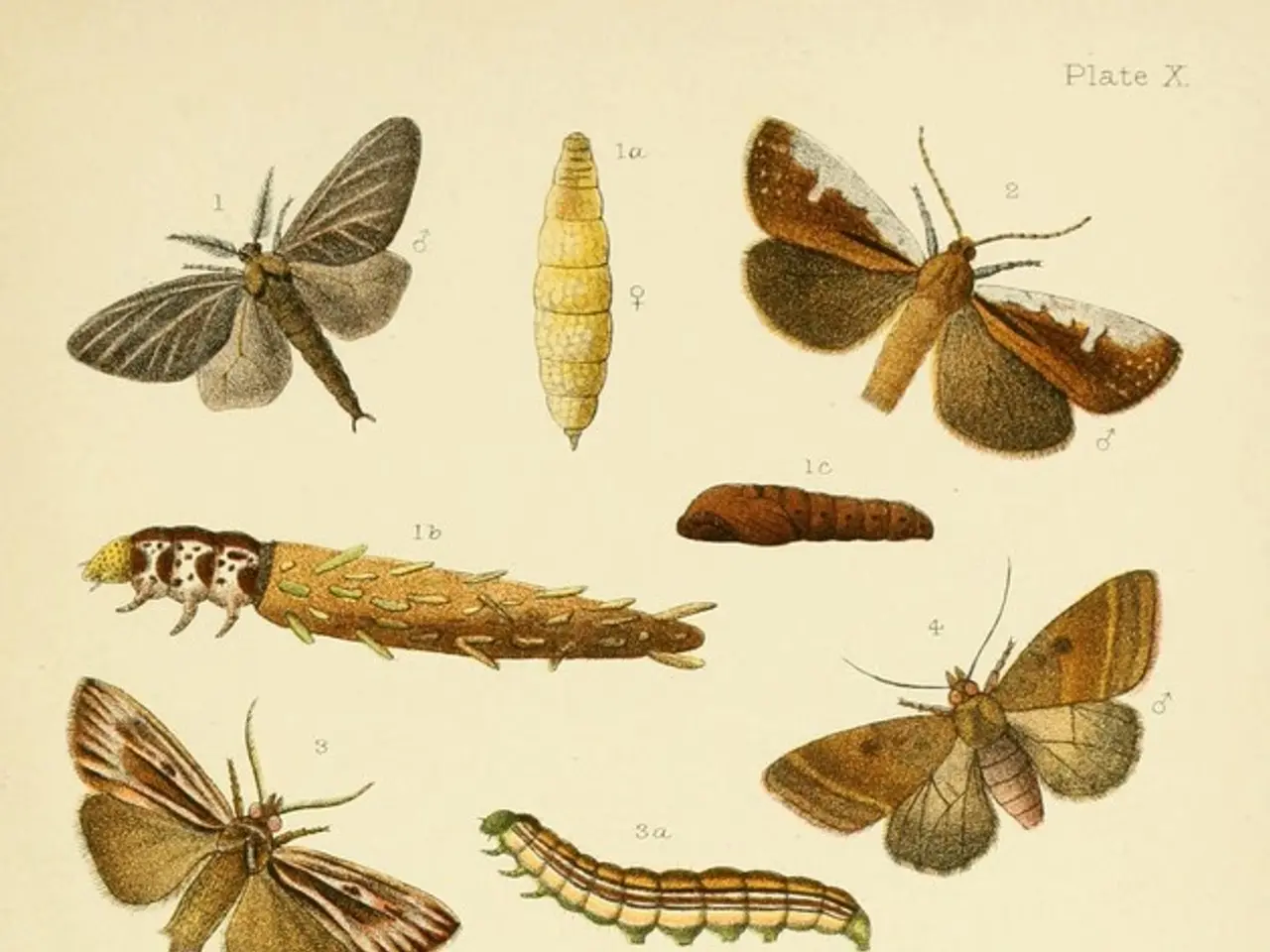Exploring a fraction of the 160,000 moth species: An Overview of Ten Distinct Moth Species
In the world of nocturnal insects, moths are a fascinating group, each species boasting unique characteristics and habitats. These creatures can be found in various ecosystems, from temperate deciduous forests to tropical rainforests, and even in human-modified habitats.
One of the most visually striking moths in North America is the Luna Moth. Known for its large size and translucent green wings adorned with long tails, the Luna Moth is a common sight in deciduous woodlands across the eastern U.S. and Canada. Its larvae feed on hickory, walnut, sweetgum, and other hardwood trees.
The Atlas Moth, one of the largest moths in the world by wing surface area, is native to tropical and subtropical forests throughout Southeast Asia. Its wings sport bold white and black markings that resemble snake heads, a defense mechanism against predators. The Io Moth, also found in North America, is another visually striking species. Males have vivid yellow forewings, while females are brown. Both sexes display prominent eyespots on their hindwings to deter predators.
Hawk Moths, known for their streamlined bodies and fast, sustained flight, can be found in diverse habitats worldwide. These moths are often colourful or cryptic and are noted for their hovering capability, much like hummingbirds. They feed on nectar using long proboscises.
Silk Moths, including the Cecropia Moth, are large moths with thick, furry bodies and brightly patterned wings. They spin silk cocoons and are typically found in varied habitats, from temperate forests in North America to tropical forests worldwide.
Tiger Moths, a subfamily within the Arctiinae, are often brightly coloured with striking patterns of stripes and spots. These patterns serve as aposematic signals, warning predators of the moths' toxicity or unpalatability. Some species produce ultrasonic sounds to deter bats.
Codling Moths, a major pest of apple orchards, are small moths with mottled gray wings and coppery patches. Their larvae, known as "apple worms," burrow into fruit. Diamondback Moths, on the other hand, target collard greens and other crops.
The Rosy Maple Moth, with its bright pink and yellow wings, is a common sight in eastern North America deciduous woods, especially where maple trees grow. Its larvae eat maple and oak leaves.
The Box Tree Moth, originally from East Asia, has become a growing concern in Europe and North America. Its moth larvae feed destructively on boxwood plants, which are popular ornamental shrubs.
Wax Moths, known for their larvae's ability to feed on beeswax, honey, pollen, and dead bees, are often a pest in beehives. Their adult form has a wingspan of about 1.5 inches and is a strong flier.
These diverse moth species demonstrate the incredible adaptability of these nocturnal insects, each species thriving in its unique habitat and playing a role in its ecosystem.
[1] Source: Ecological Roles and Adaptations of Moths [3] Source: Moths of North America
Read also:
- Budget cuts at federal and state levels jeopardize advancements in fighting HIV and AIDS within Dallas County
- Strategies for Maintaining and Boosting Physical Activity as You Grow Older
- Understanding Prediabetes: A Precursory Condition to Diabetes
- Strategies for Strengthening a Nigerian Infant's Immune System







